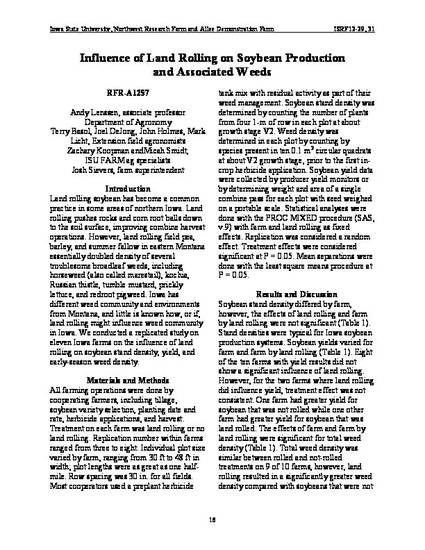
Land rolling soybean has become a common practice in some areas of northern Iowa. Land rolling pushes rocks and corn root balls down to the soil surface, improving combine harvest operations. However, land rolling field pea, barley, and summer fallow in eastern Montana essentially doubled density of several troublesome broadleaf weeds, including horseweed (also called marestail), kochia, Russian thistle, tumble mustard, prickly lettuce, and redroot pigweed. Iowa has different weed community and environments from Montana, and little is known how, or if, land rolling might influence weed community in Iowa. We conducted a replicated study on eleven Iowa farms on the influence of land rolling on soybean stand density, yield, and early-season weed density.
Available at: http://works.bepress.com/mark-licht/95/
